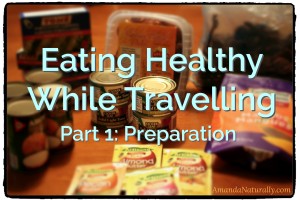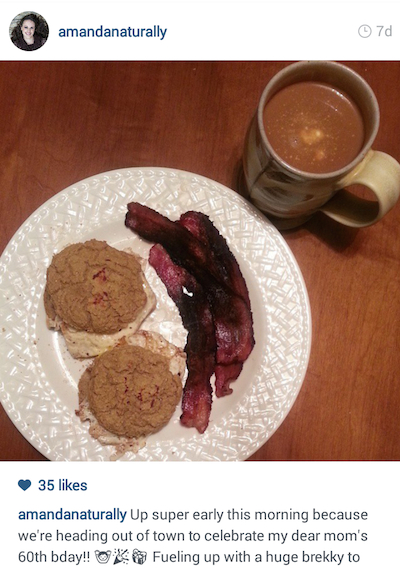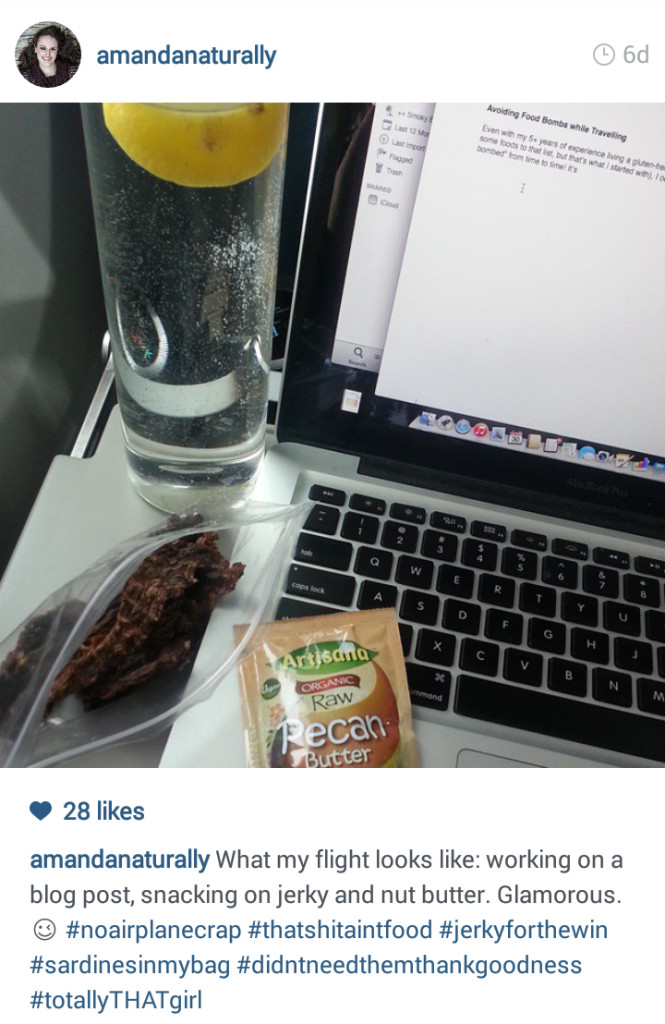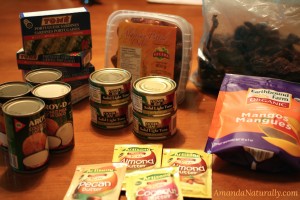First of all, let me just say that this is not a paid endorsement. I only recommend products that I truly and honestly enjoy, use or believe in. Okay, now that that’s out of the way, let me tell you all about the book I just read and LOVED!
The Purely Primal Skincare Guide by Liz Wolfe
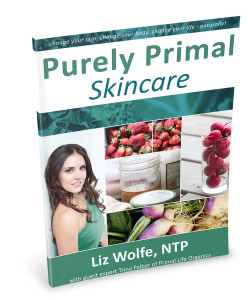 Natural, holistic skin care is something that I totally believe in. I switched away from Clinique, Herbal Essences and Aveeno almost 5 years ago, after learning through sites like the Environmental Working Group’s Skin Deep website and books like Slow Death by Rubber Duck, and There’s Lead In Your Lipstick, that practically 100% of our personal care products are pure chemicals and have no place on our body. Our skin is our largest organ and everything we put on it, ends up inside our bodies. If a product is not safe to eat, it is not safe to put on our bodies. So I headed to my local health food store and started to make the change. However, like most people I switched to natural “products”. As I became more experienced in the natural world, I started to get sketched out that the only coconut in my my natural skincare products was cocoamide DEA.
Natural, holistic skin care is something that I totally believe in. I switched away from Clinique, Herbal Essences and Aveeno almost 5 years ago, after learning through sites like the Environmental Working Group’s Skin Deep website and books like Slow Death by Rubber Duck, and There’s Lead In Your Lipstick, that practically 100% of our personal care products are pure chemicals and have no place on our body. Our skin is our largest organ and everything we put on it, ends up inside our bodies. If a product is not safe to eat, it is not safe to put on our bodies. So I headed to my local health food store and started to make the change. However, like most people I switched to natural “products”. As I became more experienced in the natural world, I started to get sketched out that the only coconut in my my natural skincare products was cocoamide DEA.
Luckily, since skin health is at least 90% based on the health of your digestive tract and the food you consume, my skin has stayed fairly clear for me over the years. Yes you read that right:
The health of your skin is almost entirely determined by your food choices and the health of your digestive tract.
That includes acne, eczema, psoriasis, rosacea, dry skin, dandruff, flaking skin…any skin condition you can name, you can connect back to your internal health.
However the key words there are almost entirely. What if you have your digestion working optimally and your diet is on point? Well that was my case. My skin was mostly working for me, but I was still getting some occasional breakouts – mostly on my shoulders and chest. I’d already cut out goat cheese (which I know is definitely a trigger – I’ll still eat it occasionally, but I am guaranteed to wake up the next morning with at least 2 or 3 blemishes). I also still had chronically dry skin – even though I was doing the oil cleansing method with coconut oil! Um hello? Isn’t coconut oil supposed to cure everything??
I finally decided to bite the bullet and purchase Liz Wolfe‘s Purely Primal Skincare Guide (formally the Skintervention Guide) because I listen to the Balanced Bites podcast and I really respected everything I’d heard Liz talk about so far regarding skin health. It’s not an area I know a ton about, so it was time to go to an expert. Boy am I glad I did and here’s why.
Section 1 and 2 – Nutrition and Digestion
The first 2 sections are great overviews of how certain foods harm or nourish your skin and the importance of an optimally working digestive tract. Doing what I do for a living, I didn’t learn a whole lot in these sections, but it was definitely worthwhile to go over real food dietary principals and digestive health, from the point of view of skin health.
Section 3 – Topical
This was my favourite section because I knew none of it! As I mentioned above, I had already been using the oil cleansing method. For those of you who aren’t familiar with this, here’s how it works (in my experience previous to this guide):
- When you want to cleanse your face, take some oil (coconut, obv) and rub it all over your face.
- Take a warm facecloth (not hot!) and gently wipe it off.
- You’re done!
The rationale behind this is “like dissolves like”, which as someone with a science background, makes total sense. If you’re trying to remove oil and gunk build up from the day, oil will dissolve it off! Soap or cleansers will too, but only because it saponifies the oil so it can dissolve into water. And as I learned from this guidebook, you will also strip your body’s natural oils causing everything to go haywire! It makes way more sense to use oil.
As we hit the winter last year, I started realizing that coconut oil simply wasn’t working for me, so I switched to olive oil which seemed to work better. But my face still felt dry, so I started using argan oil as a moisturizer as well. It still wasn’t perfect, but I was getting by.
As soon as I read Liz’s take on the oil cleansing method I immediately changed up my protocol. I hit up my local health food store and purchased some jojoba oil. She recommended a 5:1 ratio of nourishing oil (jojoba working well for most people) and castor oil for people with my skin type (mostly normal, occasionally combination skin). I could not believe what a difference it made after even the first application!! As soon as I wiped it off my skin was glowing – I kid you not! No additional moisturizer needed either.
The next test was my post-gym shower the following morning. Normally I use soap (natural soap, but yes soap) after a workout because I felt like I needed some extra help to get the sweat off. However, all I needed to do was rinse my face off with some water (sweat is water soluble after all) and I stepped out of the shower fresh faced with no dryness. I could not believe it. I’ve been playing with the OCM for over a year now, and with one minor change, my skin has jumped to a whole new level.
Another great tip I learned was to dilute some neem oil in a nourishing oil (I used coconut this time) for any blemishes that you’re trying to get rid of asap. I had a bachelorette party to go to on the weekend and Thursday night I was a little stressed because I had a few blemishes on my chest. I applied a tiny bit of neem oil in some coconut oil over my chest before I went to bed and there was a significant reduction in redness and size by the morning. It was like magic! (side note: you should absolutely spot test oils on a discrete area of your skin in case you react. I didn’t, which in hindsight could have ended horribly. Luckily it worked out!)
One of my favourite parts of this skincare guide is it give you several levels of involvement, depending on your skin health issue. Level 1 uses the most basic ingredients – basic oils, baking soda etc. Level 2 uses some more unique oils and combinations of nourishing oils and essential oils. Level 3 recommends products that are made of real ingredients, or skin food as she calls them! Unfortunately most of these products – such as Primal Life Organics (which oh man looks amazing!) – are only available in the USA, or cost an arm and a leg to ship to Canada, so these aren’t an option for me. However, they do look amazing. Luckily levels 1 and 2 are totally doable if you have access to a health food store or amazon for the products.
My Overall Opinion
If you can’t tell, I simply loved this book. I printed it out, put it in a binder and it now sits in our clinic waiting room. It is full of incredible recommendations for all levels of commitment to natural skincare. The only downside is that the products that are recommended are American, but that is absolutely to be expected since the author is from the US! And there are more 1 or 2 ingredient recommendations than there are products, so it’s not like there aren’t a ton of options for you! If you’re interested in changing your skin care routine to a more natural route (which is probably a good idea!) and don’t know where to start, this is the guidebook for you. With recommendations for facial cleansing, toning, nourishing, moisturizing, exfoliation, deep cleansing, masks, spot treatments for blemishes, hair treatments for all types of scalp issues, brushing tips, hair colouring, washing/moisturizing the body, sunscreen, lip balm, oral health, nail care, deodorant/body odour issues, make up, intimate care, pregnancy tips and skincare for babies/kids – this guide has it all. I can’t wait to try even more of her recommendations like the coffee grounds body scrub and coconut milk hair lather. Stay tuned for updates!

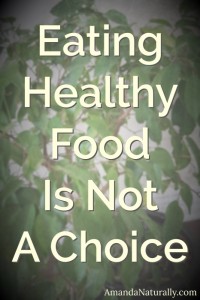 This is an issue that has been really bothering me lately. It makes me so frustrated and angry that I literally feel like I’m going to cry!
This is an issue that has been really bothering me lately. It makes me so frustrated and angry that I literally feel like I’m going to cry!
